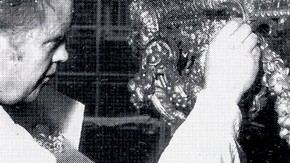Conservation Journal
April 1994 Issue 11
Editorial
One of our readers recently praised the Journal for showing conservators dealing with real problems associated with real collections. This real life situation consists of a mixture of investigation, discussion, prevention and intervention. The motivation for intervention can be either the improved stability of the object or the improved understanding and enjoyment of the object, or both. In a climate of increasing antipathy to intervention of any sort, treatment to improve stability is usually seen as more 'acceptable' than treatment to improve appearance. This ignores the purpose of objects acquired by museums which is to be seen, enjoyed and technically understood.
In addition to the problems of ethical acceptability there is often discussion about the different levels of skill and knowledge needed for the two approaches. The reasons why an object is not fully enjoyable or interpretable are often quite obvious: dirt, distortion, missing parts. The solutions are equally obvious and frequently theoretically simple, although the practical skills and aesthetic sensibility needed to implement them may be great. Treatment to improve stability carries with it much greater uncertainty. The cause of instability must be determined and, ideally, the rate of deterioration assessed. The long-term effects of treatment must be predicted. The degree of interaction of object and environment must be assessed and controlled.
The benefits of improving appearance are immediate and may legitimately be short-term (decades), but the outcome of attempts to improve stability may never be observed by the conservator undertaking them or by the curator requesting them. Surprisingly, although we carry out short-term predictive tests before treatment, we have not yet developed programmes of long-term ,evaluation of our past treatments.
Yet realistically it is impossible to disentangle the two approaches completely. All intervention will have some effect on interpretation, and all treatment will have unpredictable effects on long-term stability. Interestingly, the analysis of the conservator's job by the Museums Training Institute gives equal weight to 'treat item - minimise deterioration' and 'treat item - aid interpretation by physical intervention'. The two elements have the same number of performance criteria, some of which are identical and unsurprisingly stipulate the same under-pinning knowledge and understanding, namely 'Conservation Ethics, Material Science relating to particular items, and Health and Safety requirements'.
The majority of articles in this edition are about practical treatments. They are written by conservators at varying stages in their careers and demonstrate some of the differing approaches to intervention and the different skills needed. One of the authors, John Bornhoft, has now retired taking his skills and 35 years of experience with him but hopefully leaving information behind in the departmental record and in the minds of colleagues. Some of his recollections of earlier days of the Department are now held in the Departmental Archive, the creation of which is featured in this edition.
Another contributor to this archive was Malcolm Green, who retired after 43 years as gilding conservator but who sadly died only six months after his retirement. He was a great influence on many who now practise the conservation of gilded surfaces in institutions throughout the world.
April 1994 Issue 11
- Editorial
- A saint unveiled
- 17th Century Chinese canopied bed
- Recording the changes: V&A conservation departmental archive
- The ageing & stabilisation of shellac varnish resin - an undergraduate research project at Imperial College
- Treatment of an early 18th Century Indian chintz qanat
- ICCROM - Japanese paper conservation course 1993: an introduction to the ancient skills of scroll mounting for the modern conservator
- Sand cast aluminium
